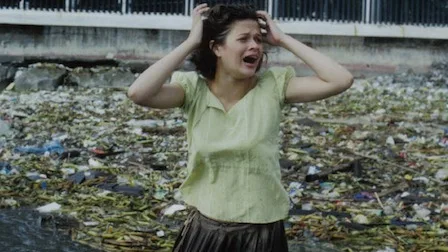(I forgot I even wrote this--my brief contribution on the state of Philippine cinema to Cahier's L'Atlas du Cinema 2004)
Several elements caused 2003 to be a poor year in Philippine cinema, continuing a trend that started years back. President Joseph Estrada, a former actor, was loyal to the local industry and allowed it to flourish a little, but his management of the national government was so confused and corrupt that he was overthrown by a popular revolt in 2001. His successor, Gloria Macapagal-Arroyo, was far less sympathetic, the eventual result of which was that film production rate hit a plateau, and began to recede. With presidential elections coming this May 2004, and a new actor, Fernando Poe Jr., again aspiring to the presidency (and, according to polls, has a good chance of winning) the local industry might receive better treatment but, paradoxically, the rest of the country fears the possibility of further chaos.
With this anticipated instability, economic depression continued unabated. The peso depreciated in value, leading to higher prices for imported raw stock, higher production costs, and higher ticket prices overall. Then there is continued censorship by the Movies and Television Ratings Board--ostensibly a board that only rates the films and doesn't have the power to censor them. But films given a rating of R-18, or 'For Adults Only,' are effectively banned from commercial theaters; as a result, producers and distributors cut film prints prior to submission to the board, or veer away from more sensual or controversial topics altogether. Add to this the heavy taxation of the industry--at almost 30% of gross sales, one of the heaviest in the world--and you have dim prospects indeed. Members of the Director’s Guild of the Philippines (DGPI) estimate that production will barely reach 40 films in 2004, where in the late 1990s it ranged from 100 to 200 a year.
Despite this, some gems can still be found, mostly independent productions: Maryo J. de los Reyes’ Magnifico (from independent outfit Violett Films) is that rarity in recent Philippine cinema: a wholesome family picture that is actually good, about a boy who goes about trying to help his family and neighbors. It's a modest film that sustains a specific emotional tone--an air of mild enchantment, a stylized realism that allows for improbabilities.
Quark Henares’ Keka (from mainstream studio Viva Films) borrows from Truffaut's The Bride Wore Black and Tarantino’s Kill Bill among others, and suffers from shallow psychology and plot loopholes, but these are minor cavils--they don’t destroy enjoyment of the film. Quark knows how to inject enough style to make the picture watchable, enough story to make it plausible. Not a lot of profound social comment, but still an imaginatively playful sketch of middle-class youth in Philippine society today.
Mario O’Hara’s Babae sa Breakwater (Woman of the Breakwater), from newcomer studio Entertainment Warehouse, is about the wretched outcasts living along the Manila Bay breakwater. These people literally live on the edge of Manila; assemble their shanties from whatever flotsam drifts in from the sea; make a living off the water by fishing, selling what they find on shore, begging, whoring, whatever they manage to do.
This is Lino Brocka* territory of course--O’Hara’s camera peers up at the postmodern architecture alongside the bay, at the gleaming glass hotels and malls and condominiums that tourists and upper-class Filipinos love to frequent. It also recalls Vittorio de Sica’s Miracle in Milan, thanks to its unblinking look at poverty that is at the same time cheerful and charming in spirit; the sea, framed by the Manila Bay and its fringe of misérables, rarely looked more beautiful, more terrible, or more mysterious. Easily the best Filipino film, not just this year but in the past few years.
Noel Vera, regular film critic for Businessworld, contributor for Menzone Magazine and Cinemaya, has written for the Singapore Film Festival, Hong Kong Film Festival, Cinemanila Film Festival and Udine Far East Film Festival.
*Lino Brocka (1940-1991) earned international recognition with Insiang at the Quinzaine des Réalisteurs in Cannes (1978), a festival where four of his following films including his last, Fight for Us (1989), were also screened on and off-competition.


2 comments:
This is slightly off toipic. Where can we order your book in the US? Insanely expensive when it comes up used. And the Big O doesn't write back when I ask about US orders. Like a lot of people, I 'm a great CAD fan and would love to read the book!
Totally on-topic. My email is noelbotevera@gmail.com. Send me an email and let's work out the details.
Post a Comment